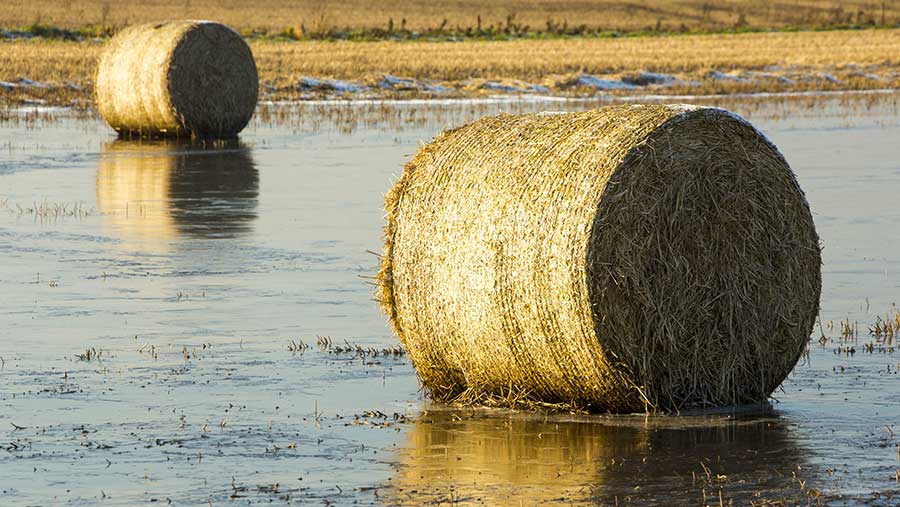Advice to help you protect your farm during flooding
 © Global Warming Images/Shutterstock
© Global Warming Images/Shutterstock Floods can have devastating impacts on farm businesses, affecting livestock, buildings and homes.
In many instances, farmers have found themselves completely at the mercy of the elements, but there are some steps you can take to reduce the risk of flooding and minimise the damage caused if a flood does happen.
A good starting point is a flood plan.
It is important everyone on the farm, all staff and family, understand what this consists of, so it is a good idea to make a written plan and store it somewhere easily accessible for all.
Farm flood planning
A farm flood plan should look at the following areas:
- Identify fields at higher ground where livestock can be moved to safety and gain permission to use these in advance of flooding if they are not your own
- Identify stock, machinery and tools that can easily be moved off the farm to prevent loss or damage
- Identify any chemicals or fuels on the farm that could contaminate floodwater and think about how they could be moved to safety during a flood
- Consider how you will inform staff about an impending flood and how staff may be able to help you prepare
- Draw up a contingency plan with suppliers to ensure business continuity to reduce loss of earnings
- Consider purchasing a stockpile of useful materials that can be used during a flood such as sandbags to prevent water entering barns or sheds, plywood to board up windows and pallets to raise stock and equipment above floodwater level.
Home flood planning
In most cases, the farm will also be a home. In the home, there should be a flood plan and a flood kit, so that everyone knows how to respond if a flood occurs. You should also:
- Familiarise yourself with how to shut off gas, electricity and water supplies
- Keep a list of useful contact numbers handy
- Consider flood protection products that could help to reduce the impact of flooding on your property and ensure your insurance provides adequate cover for flood damage.
There are lots of products and techniques you can use to keep floodwater out of the house and to minimise its impact if it does get in, such as water-resistant skirting and specially made flood doors.
Reducing the likelihood of flooding on farm
Managing a flood is one thing, but reducing the likelihood of it happening is another. Here are some tips for farmers to consider, to reduce the risk of flooding on your farm:
- Consider creating run-off ponds, or sediment traps on the farm to reduce the likelihood of flooding
- Avoid directing run off towards roads and watercourses
- Discharge roof water into swales and/or soakaways around the farm, to slow water down and recharge groundwater
- Loosen soil to leave a rough surface after harvesting to allow more water to soak in rather than run off land
- Remove stock when soils are wet in high-risk fields
- Use low-ground-pressure tyres to reduce soil compaction.
